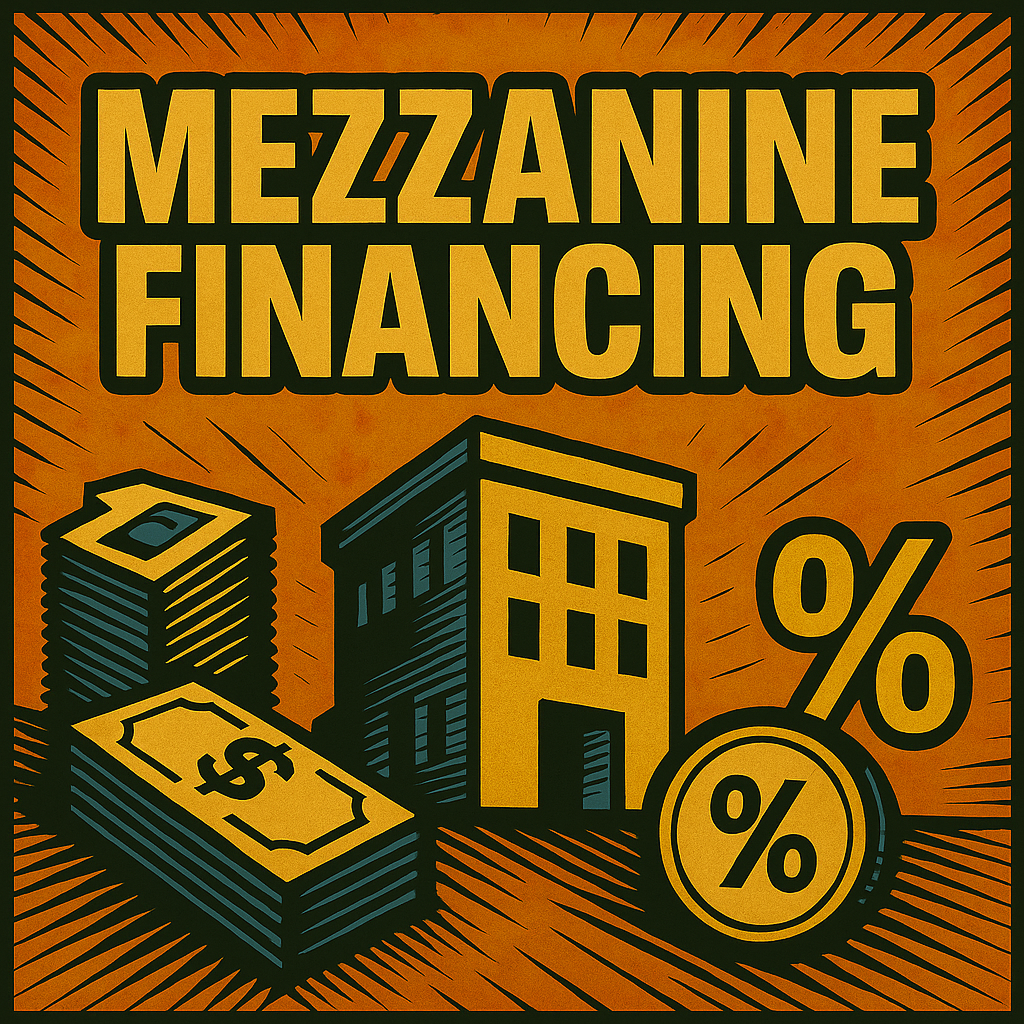
Mezzanine Financing
“Half Loan, Half Leap”
Bridging the Gap Between Debt and Equity
Mezzanine financing is a hybrid form of capital that sits between senior debt and equity. It’s used when a business has outgrown traditional loans but doesn’t want to give up full ownership or control.
It typically takes the form of subordinated debt with an equity kicker — meaning the lender earns interest but also gets the potential upside through warrants or conversion rights (more below).
Where It Fits in the Capital Stack
Senior Debt (Lowest Risk / Lowest Return) — First claim on assets (banks, secured lenders).
Mezzanine Debt (Middle Risk / Middle-High Return) — Subordinate to senior loans but senior to equity.
Equity (Highest Risk / Highest Return) — Owners, investors, or private equity firms.
• Mezzanine fills the gap when senior lenders can’t cover 100% of funding needs, but owners don’t want to sell more equity.
For Business Owners:
- Enables growth, acquisition, or recapitalization without giving up majority control.
- Flexible structure — often interest-only payments for a period.
For Lenders / Investors:
- Higher yield opportunity (typically 12–20%).
- Convertible upside if the business grows or sells.
Common Use Cases
- Acquisitions / Buyouts: When senior debt and owner equity don’t cover the full purchase.
- Expansion Capital: To fund growth without dilution.
- Recapitalizations: To restructure ownership or redeem early investors.
Typical Structure
| Component | Description |
|---|---|
| Instrument Type | Subordinated debt or preferred equity |
| Return | Fixed interest + potential equity participation |
| Security | Junior lien or unsecured |
| Maturity | 3–7 years (often bullet repayment) |
| Equity Kicker | Warrants, conversion rights, or profit participation |
Example Scenario
A manufacturer is acquiring a competitor for $20 million.
- Senior bank loan: $12 million
- Owner equity: $4 million
- Remaining gap: $4 million → filled by mezzanine lender
The mezzanine loan earns 14% annual interest and includes warrants for 5% ownership if the company sells.
This structure allows the owner to complete the deal without giving up control while the mezzanine investor earns a premium for higher risk.
Potential Upside: Warrants & Conversion Rights
While mezzanine capital is structured primarily as debt, investors often receive an “equity kicker” — a small piece of ownership upside to boost their total return. This comes in two main forms:
Warrants
- Warrants give the mezzanine lender the option to purchase equity in the company at a set price in the future (usually tied to a sale, IPO, or major event).
- They’re often detached from the loan — meaning the lender earns regular interest and can later exercise the warrants for add’l gain.
- Example:
A mezzanine lender finances $5 million at 14% interest and receives warrants to buy 3% of the company at today’s value. If the business later sells for double, that 3% becomes valuable upside.
Think of warrants as a “call option” on the company’s future success.
Conversion Rights
- Some mezzanine loans are convertible, meaning the lender can exchange their debt for equity under certain conditions (often if the borrower defaults or hits a performance trigger).
- This feature gives the lender a path to ownership if the borrower can’t fully repay.
- Example:
A $3 million mezzanine note might include a conversion option allowing the lender to convert into preferred stock if the loan isn’t repaid within five years.
Conversion rights protect the investor’s downside and provide potential upside if the company grows.
For lenders, these features sweeten the risk-return profile — combining steady income (interest) with growth potential.
For business owners, they offer capital without immediate dilution, though there’s some equity sharing down the line if the company performs well.

Takeaway
Mezzanine financing is the flexible middle ground — part loan, part equity — that helps businesses fund big moves like acquisitions, expansions, or ownership transitions. It rewards investors for taking higher risk while (mostly) preserving ownership for founders and management.

